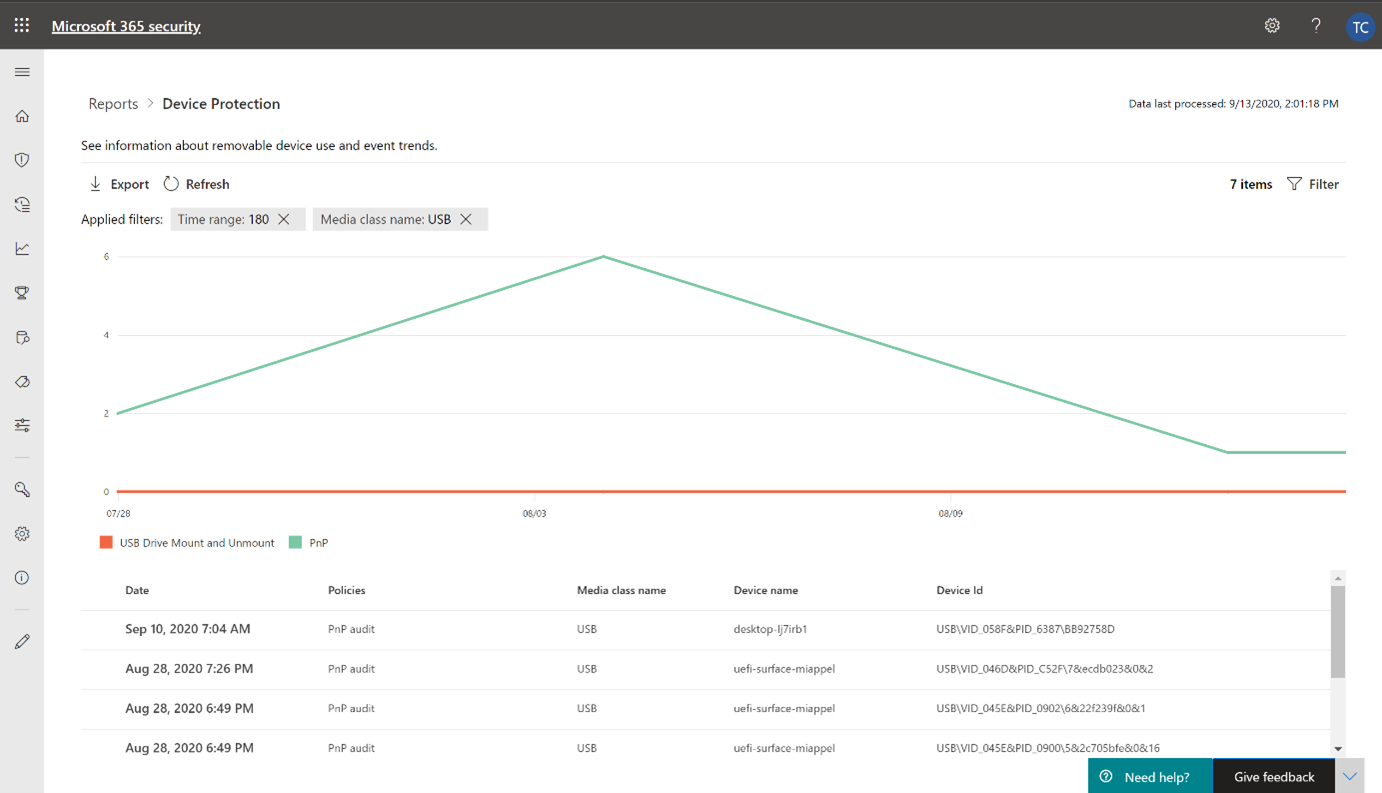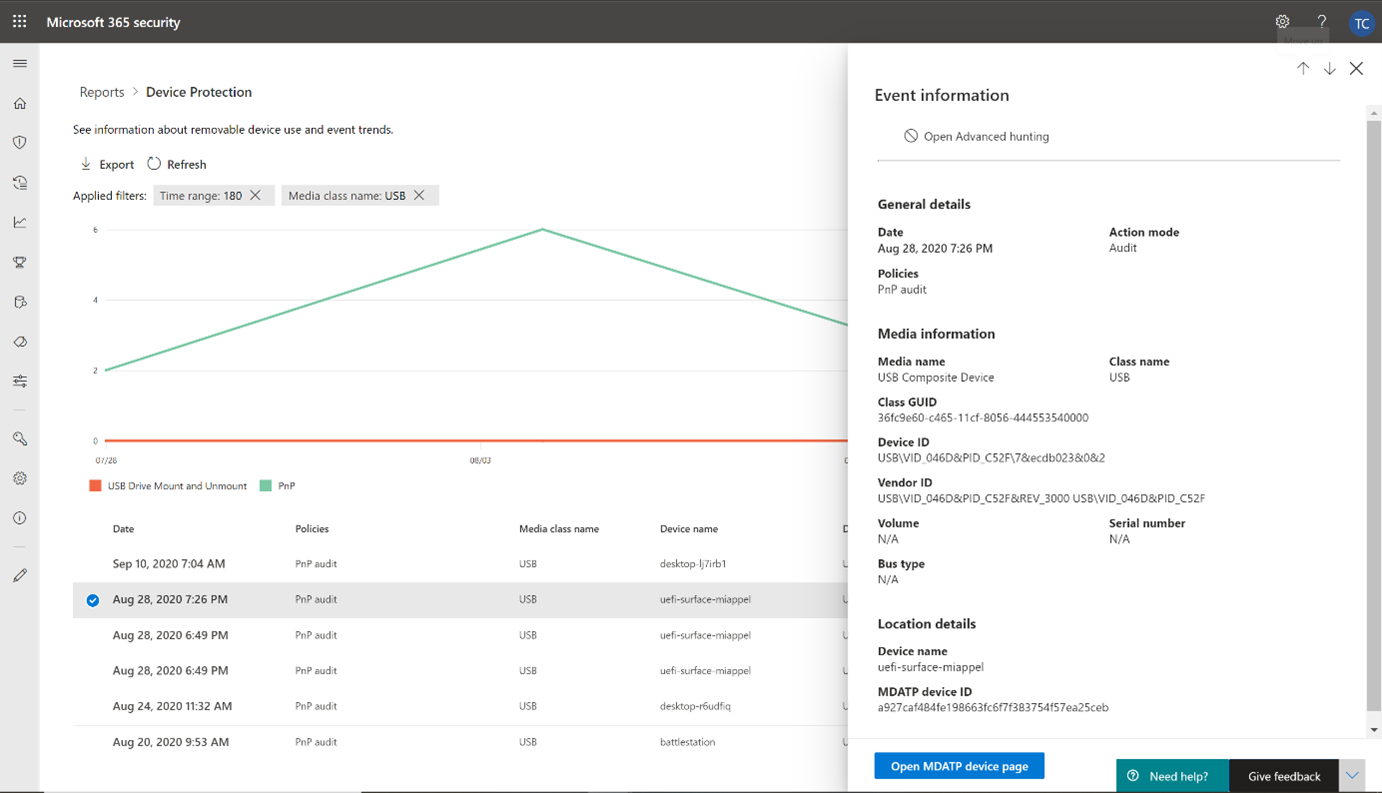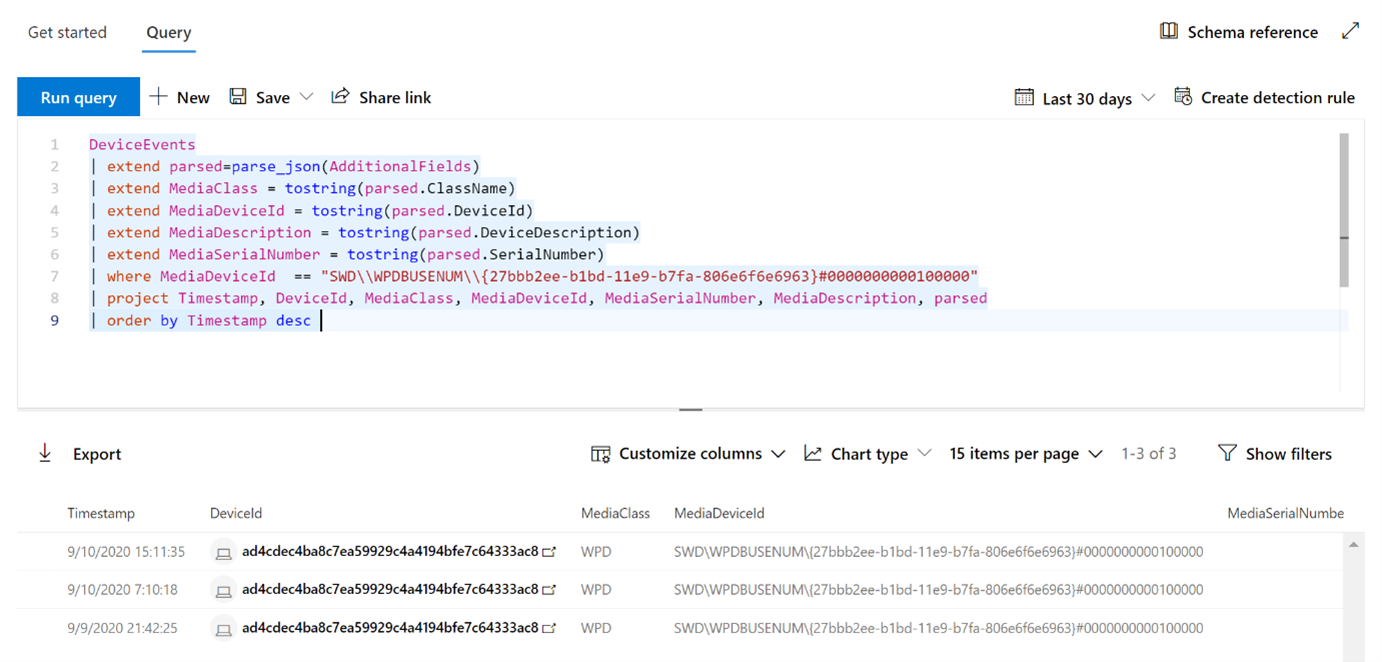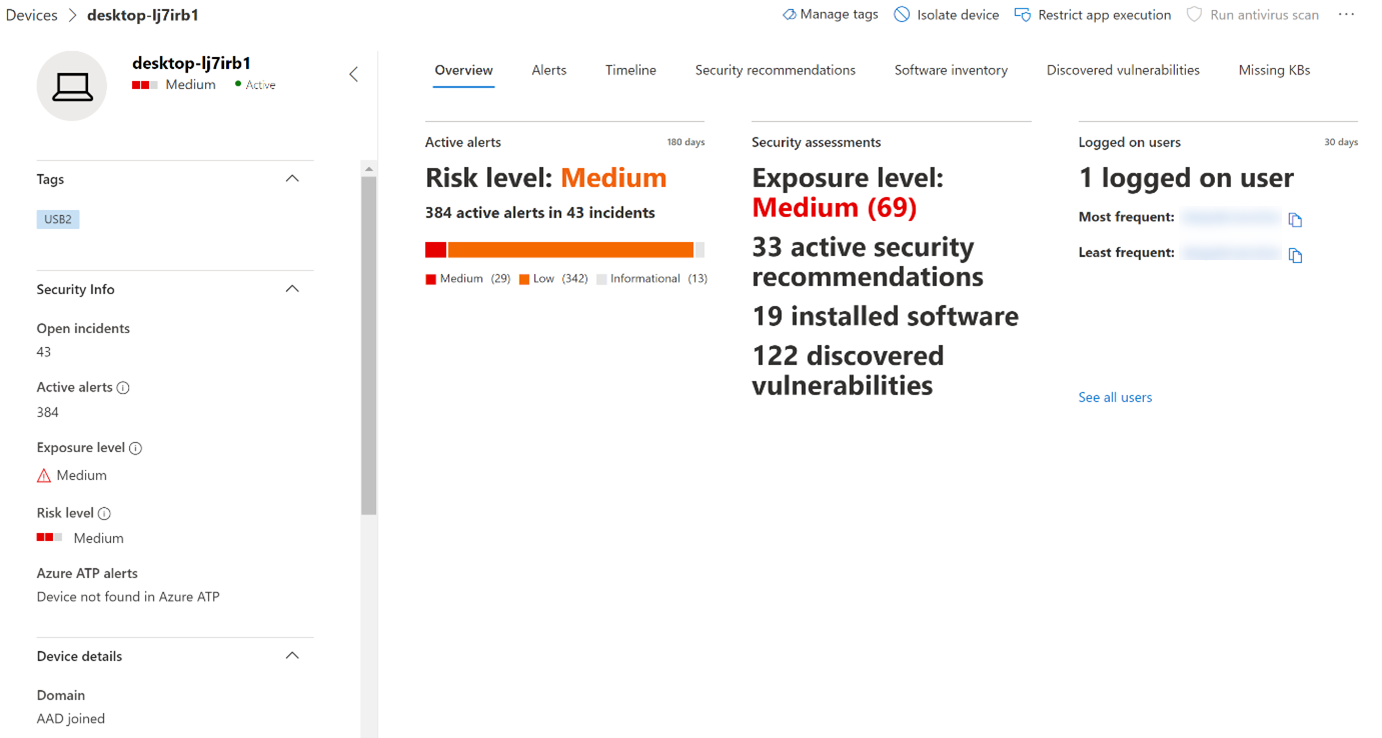View device control events and information in Microsoft Defender for Endpoint
Microsoft Defender for Endpoint device control helps protect your organization from potential data loss, malware, or other cyberthreats by allowing or preventing certain devices to be connected to users' computers. Your security team can view information about device control events with advanced hunting or by using the device control report.
Important
Microsoft recommends that you use roles with the fewest permissions. This helps improve security for your organization. Global Administrator is a highly privileged role that should be limited to emergency scenarios when you can't use an existing role.
To access the Microsoft Defender portal, your subscription must include Microsoft 365 for E5 reporting.
Select each tab to learn more about advanced hunting and the device control report.
Advanced hunting
Applies to:
When a device control policy is triggered, an event is visible with advanced hunting, regardless of whether it was initiated by the system or by the user who signed in. This section includes some example queries you can use in advanced hunting.
Example 1: Removable storage policy triggered by disk and file system level enforcement
When a RemovableStoragePolicyTriggered action occurs, event information about the disk and file system level enforcement is available.
Tip
Currently, in advanced hunting, there's a limit of 300 events per device per day for RemovableStoragePolicyTriggered events. Use the device control report to view additional data.
//RemovableStoragePolicyTriggered: event triggered by Disk and file system level enforcement for both Printer and Removable storage based on your policy
DeviceEvents
| where ActionType == "RemovableStoragePolicyTriggered"
| extend parsed=parse_json(AdditionalFields)
| extend RemovableStorageAccess = tostring(parsed.RemovableStorageAccess)
| extend RemovableStoragePolicyVerdict = tostring(parsed.RemovableStoragePolicyVerdict)
| extend MediaBusType = tostring(parsed.BusType)
| extend MediaClassGuid = tostring(parsed.ClassGuid)
| extend MediaClassName = tostring(parsed.ClassName)
| extend MediaDeviceId = tostring(parsed.DeviceId)
| extend MediaInstanceId = tostring(parsed.DeviceInstanceId)
| extend MediaName = tostring(parsed.MediaName)
| extend RemovableStoragePolicy = tostring(parsed.RemovableStoragePolicy)
| extend MediaProductId = tostring(parsed.ProductId)
| extend MediaVendorId = tostring(parsed.VendorId)
| extend MediaSerialNumber = tostring(parsed.SerialNumber)
|project Timestamp, DeviceId, DeviceName, InitiatingProcessAccountName, ActionType, RemovableStorageAccess, RemovableStoragePolicyVerdict, MediaBusType, MediaClassGuid, MediaClassName, MediaDeviceId, MediaInstanceId, MediaName, RemovableStoragePolicy, MediaProductId, MediaVendorId, MediaSerialNumber, FolderPath, FileSize
| order by Timestamp desc
Tip
Do you want to learn more? Engage with the Microsoft Security community in our Tech Community: Microsoft Defender for Endpoint Tech Community.



